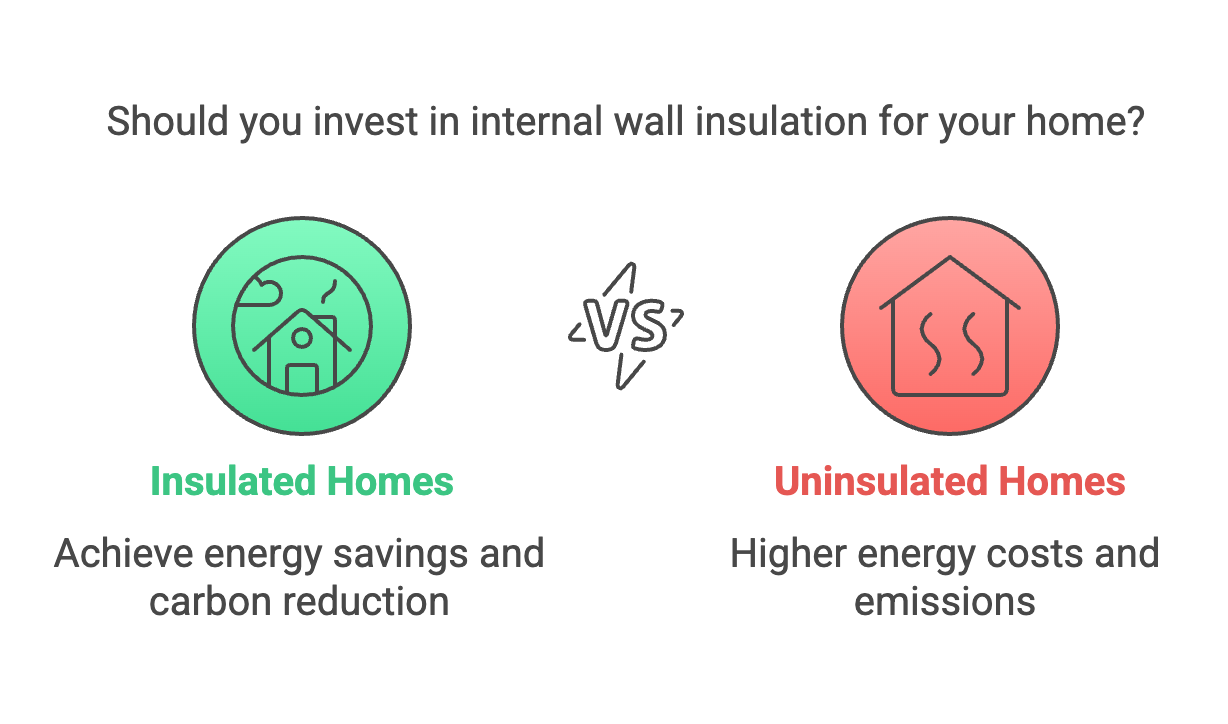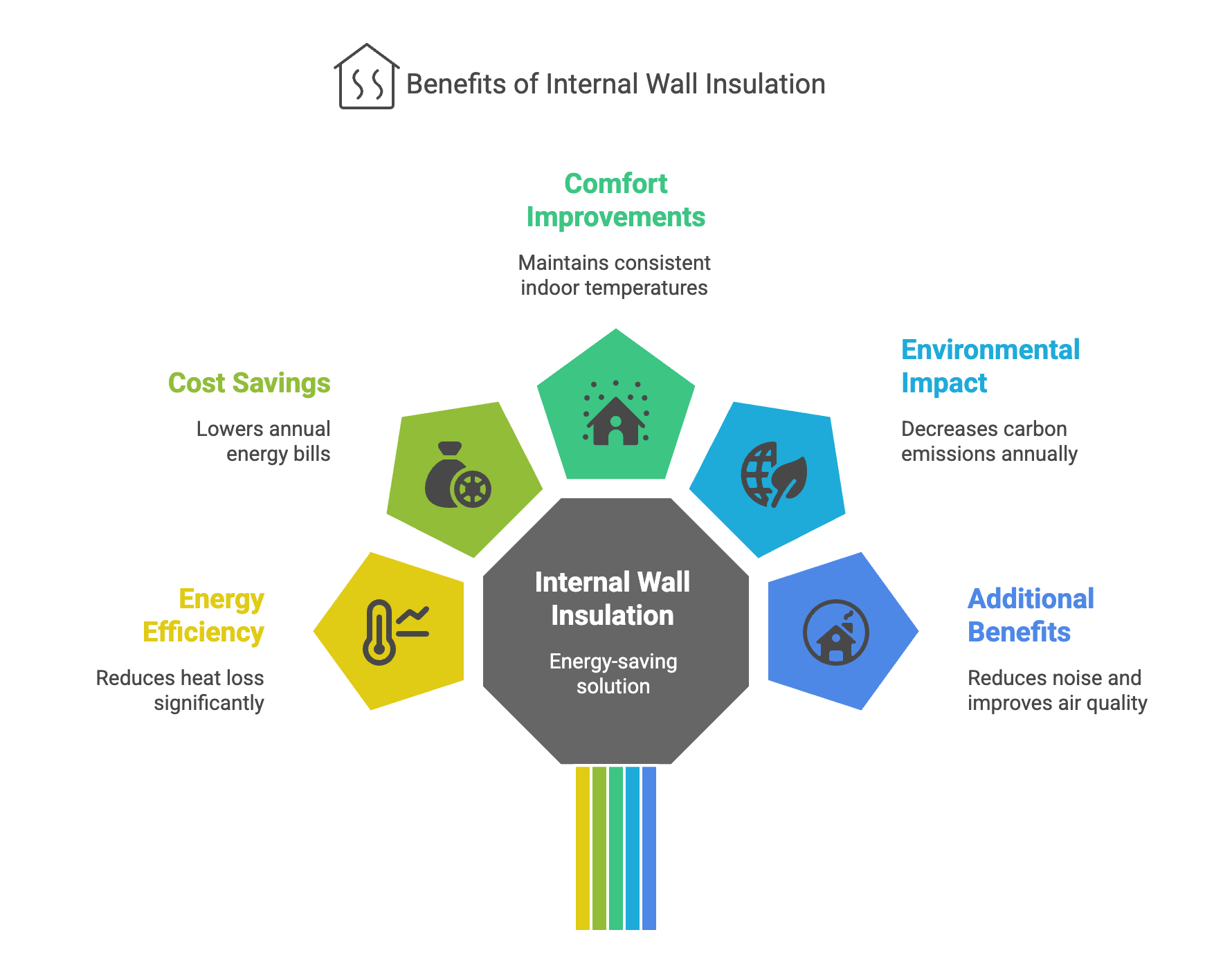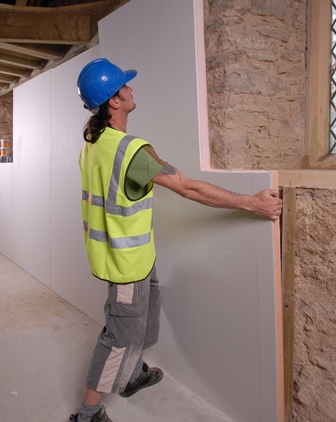Internal Wall Insulation Grants
Internal wall insulation (IWI) is a crucial solution for enhancing the energy efficiency of homes with solid walls. The UK government, recognising its importance, offers grants to support homeowners and tenants in implementing this effective measure.
Internal wall insulation works by adding insulation to the inside of external walls, helping to prevent heat loss. It’s especially useful for older homes with solid walls, commonly built before 1930, where external insulation may not be possible.
Two main schemes currently offer internal wall insulation grants:
- The Great British Insulation Scheme (GBIS): Launched in 2023 with a £1 billion budget, GBIS aims to retrofit 300,000 homes by March 31, 2026. It provides free or low-cost internal wall insulation for eligible households.
- The Energy Company Obligation (ECO4) scheme: This program focuses on supporting low-income and fuel-poor households with energy-saving home improvements, including internal wall insulation.
These grants can cover a significant portion or all of the costs associated with installing internal wall insulation, typically costing around £4,500 for a standard semi-detached house. By taking advantage of these schemes, homeowners and tenants can create warmer, more cost-efficient living spaces while contributing to the nation’s carbon reduction goals.
Take action today! Apply for an internal wall insulation grant now to start saving on energy bills and improve your home’s comfort.
Apply Now

How It Works
-
Complete Online Form
-
Free Survey Booked
-
Insulation Installed
-
Grant Claimed
Who qualifies for Internal Wall Insulation Grants?
Internal wall insulation grants are part of government-backed initiatives like the Great British Insulation Scheme (GBIS) and Energy Company Obligation (ECO4). These schemes are designed to help households improve energy efficiency, reduce heating costs, and lower carbon emissions. However, not everyone qualifies for these grants. Below is a detailed breakdown of the eligibility criteria as of March 2025.
1. Income-Based Eligibility
One of the key qualifying factors for internal wall insulation grants is household income. The schemes prioritise low-income households to ensure that those who need help the most can access it.
- Threshold: Households with a gross annual income below £31,000 may qualify.
- Self-Employed Applicants: For self-employed individuals, eligibility is assessed based on profit rather than turnover, ensuring fairness for those with fluctuating incomes.
2. Energy Performance Certificate (EPC) Rating
The energy efficiency of your property plays a significant role in determining eligibility. Properties with poor energy performance are prioritised under both GBIS and ECO4.
- GBIS: Properties with an EPC rating of D, E, F, or G are eligible.
- ECO4: Properties with an EPC rating of D, E, F, or G are also eligible, with a focus on homes rated E to G for deeper retrofits. Not sure what your EPC rating is? You can check online or ask your landlord.
3. Council Tax Band Criteria
Eligibility is also influenced by your property’s Council Tax band. This ensures that funding is targeted at homes that are likely to benefit the most from insulation improvements.
- England: Properties in Council Tax bands A to D qualify.
- Scotland and Wales: Properties in Council Tax bands A to E qualify.
4. Benefit-Based Eligibility
Households receiving certain government benefits may automatically qualify for internal wall insulation grants. This ensures support for vulnerable groups and those already receiving financial assistance.
Eligible benefits include (but are not limited to):
- Universal Credit
- Housing Benefit
- Pension Credit
- Child Benefit (subject to income thresholds)
- Employment Support Allowance (ESA)
- Income Support
- Working Tax Credit
5. Property Ownership and Tenure
Both homeowners and private renters can apply for internal wall insulation grants under these schemes. However, there are specific conditions depending on the type of property ownership:
Homeowners:
- Must meet the income or EPC criteria.
Private Renters:
- Landlords can apply on behalf of tenants but must comply with Minimum Energy Efficiency Standards (MEES).
Social Housing:
- Social housing properties may qualify under ECO4 if they have an EPC rating of E, F, or G.
6. Priority Groups
Certain groups are given priority under these schemes due to their vulnerability or higher risk of fuel poverty:
- Low-Income Households: Families struggling to meet heating costs.
- Pensioners and Elderly Residents: Especially those over 70 years old or in poor health.
- Health Conditions: Households with individuals whose health is worsened by living in cold homes (e.g., respiratory or cardiovascular conditions).
7. Property Type and Suitability
Not all properties are suitable for internal wall insulation. The type of property and its construction will determine whether it qualifies:
- Homes with solid walls (typically built before 1920) are ideal candidates for internal wall insulation.
- Properties with inefficient heating systems or poor existing insulation may also be prioritised.
For private rented sector properties:
- GBIS supports homes with EPC ratings D or E (and F or G if exempt from MEES).
- ECO4 focuses on homes with EPC ratings E to G.
8. Local Authority Referrals
Local authorities have the flexibility to refer households under “flexible eligibility” criteria if they believe the household is at risk of fuel poverty or living on a low income but does not meet standard criteria.
This allows additional support for households that may not qualify through traditional routes but still need assistance.
Benefits of Internal Wall Insulation

Apply today and start enjoying the benefits of improved energy efficiency and cost savings!Apply for Free Insulation
See if you qualify:
Click HERE to Find Out >>Types of Internal Wall Insulation
There are two main types of Internal Wall Insulation. Insulation boards are either fixed to the walls or a timber frame can be constructed with an insulating material placed between the timber.
Stud walls are stronger than insulation boards and can easily hold the weight of shelving, cupboards, etc. but they tend to be thicker than insulation boards. Both options will require the removal and replacement of fittings such as light switches, skirting boards, etc.
The choice of technique will depend upon how your property is constructed. Internal Wall Insulation installers will be able to advise which solution is best.

How much can Internal Wall Insulation save?
Internal wall insulation significantly cuts energy bills and boosts home efficiency. Homeowners can save £140 to £700 annually on heating, depending on their property type and energy use.
Detached homes might see up to £660 in yearly savings, while flats and smaller homes could save £180 to £200. This insulation method prevents 25% to 35% of heat loss through solid walls, improving comfort and energy efficiency.
The environmental benefits are also significant, potentially reducing carbon emissions by 410 kg to 2,100 kg of CO2 each year. Though initial costs range from £4,000 to £13,000, the long-term savings and up to 32% lower energy consumption in insulated homes justify the investment, also increasing thermal comfort and property value.
How can FreeInsulation help?
Once you have completed our application form, we will check to ensure that the property is likely to be suitable before allocating to an approved local insulation installer. They will then telephone you to arrange a free, no-obligation survey. If the property is suitable and you qualify for a grant, the work will be arranged.
